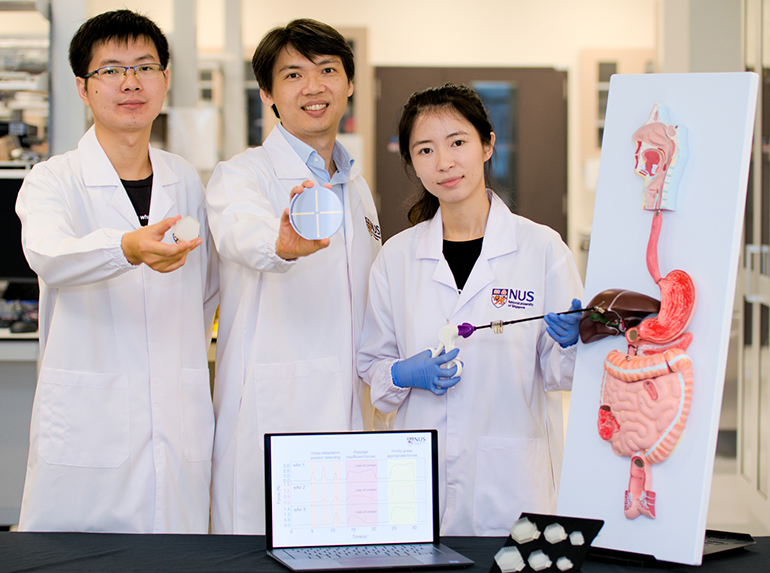Researchers at the National University of Singapore have developed a highly sensitive pressure sensor that can provide haptic feedback for surgeons using laparoscopic tools or for use in robotic grippers as part of robotic surgical systems. The technology is inspired by the surface of the lotus leaf, which is extremely sensitive to the pressure exerted by tiny drops of water and will repel them. This sensor is also highly sensitive, using an incorporated layer of air to detect tiny pressure changes, and a surface coating inside to reduce friction. Called “eAir”, the devices can also be highly miniaturized to just a few millimeters in size, making them well suited for inclusion in laparoscopic devices.
“Conducting surgeries with graspers presents its unique challenges,” said Benjamin Tee, a researcher involved in the study. “Precise control and accurate perception of the forces applied are critical, but traditional tools can sometimes fall short, making surgeons rely heavily on experience, and even intuition. The introduction of soft and readily integrable eAir sensors, however, could be a game-changer.”
These researchers were inspired to develop a new pressure sensor for use in minimally invasive surgery and also potentially to monitor intracranial pressure. Conventional pressure sensors tend to be bulky, inconsistent in their measurements and they are often made using stiff materials that inhibit their sensitivity.
“When surgeons perform minimally-invasive surgery such as laparoscopic or robotic surgery, we can control the jaws of the graspers, but we are unable to feel what the end-effectors are grasping,” Kaan Hung Leng, a surgeon who is familiar with the research. “Hence, surgeons have to rely on our sense of sight and years of experience to make a judgement call about critical information that our sense of touch could otherwise provide.”
The Singapore team were inspired by the sensitivity of lotus leaves to tiny falling water droplets, whereby the leaves repel the droplets quickly. “The sensor, akin to a miniature ‘capacity meter’, can detect minute pressure changes — mirroring the sensitivity of a lotus leaf to the extremely light touch of a water droplet,” said Tee.
“The haptic or tactile feedback provided by smart pressure sensors has the potential to revolutionize the field of minimally-invasive surgery,” said Hung Leng. “For example, information about whether a tissue that is being grasped is hard, firm or soft provides an additional and important source of information to aid surgeons in making prudent decisions during a surgery. Ultimately, these intra-operative benefits have the potential to translate into improved surgical and patient outcomes.”
Study in journal Nature Materials: Frictionless multiphasic interface for near-ideal aero-elastic pressure sensing
Via: National University of Singapore

